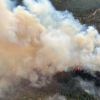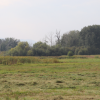A well-known Penticton homeless encampment got the full-on cleanup treatment this past weekend.
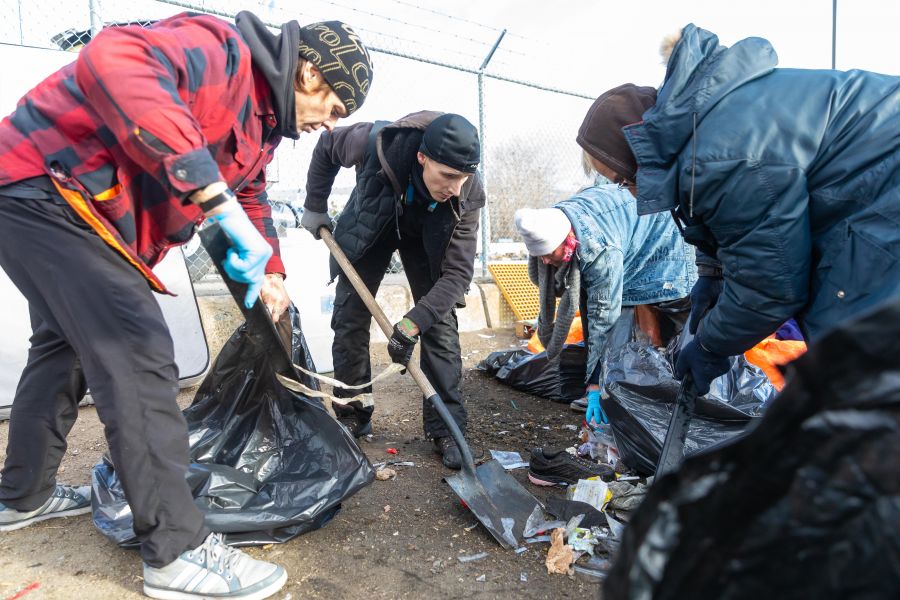
And the folks on the front lines might surprise you.
The camp, situated in a highly visible location at the intersection of Fairview Rd. and Hwy 97 and one of the biggest regional newsmakers of 2025 to date, formed not long after the infamous camp before it -- also bordering Hwy 97 but several kilometers north near Red Wing Resorts – was bulldozed last summer.
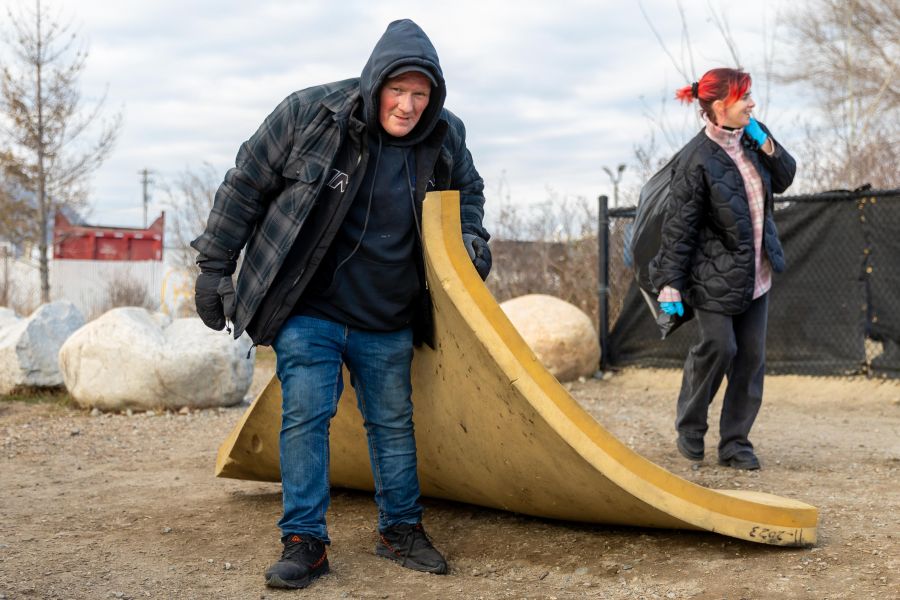
Its notoriety has only grown in the months since as it continued to expand and become increasingly more disheveled. Indeed, the City of Penticton and the snpink’tn Indian Band issued a joint press release in mid-January addressing the issues at play.
Arguably the foremost of those issues is ownership of the land in question. The release pointed to a convoluted history that included unceded appropriation from the snpink’tn Indian Band, a federal to provincial transfer, and an unfulfilled return to the Band.
"Although responsibility for the encampment falls with the province," it concluded, "all parties are seeking a solution."
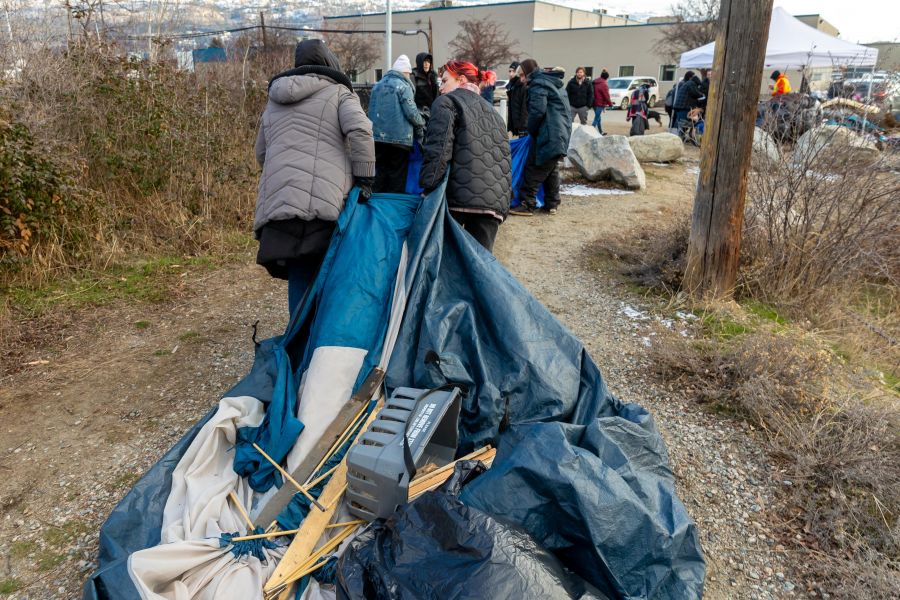
But all red tape aside, a big change for the better happened last Saturday when an enthusiastic group with "lived and/or living experience with homelessness" (translation: people who have or are currently experiencing homelessness themselves) went to work.
They gathered late morning at the site and spent the next four hours in the camp and along the banks of adjacent Ellis Creek, finding, sorting, raking, shoveling, dragging and generally clearing hundreds of pounds of debris.
Later, City of Penticton bylaw personnel arrived in pickup trucks to remove it. It took several trips.
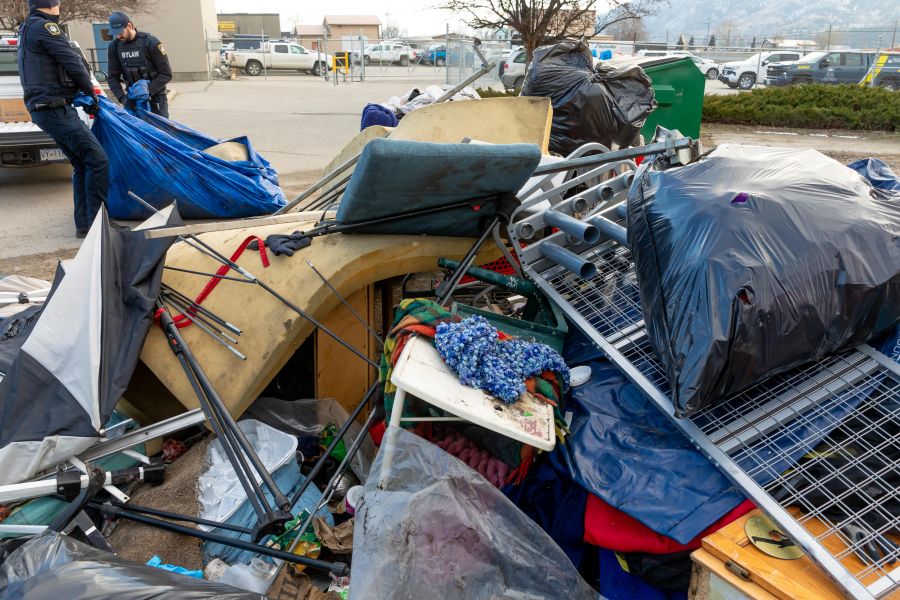
Today, the area remains populated. But it isn’t nearly the eyesore or the environmental debacle it was just a few days ago.
The entity overseeing the cleanup, and several similar monthly cleanups before that, is called "100 More Homes Penticton," a collaborative of approximately 30 local organizations (including the City of Penticton and Interior Health) founded in 2016 to help find solutions to the homelessness situation.
In the years since its formation, 100 More Homes has become a leading advocate for the homeless and has played key roles in the establishment of winter shelters in each of the last four years.
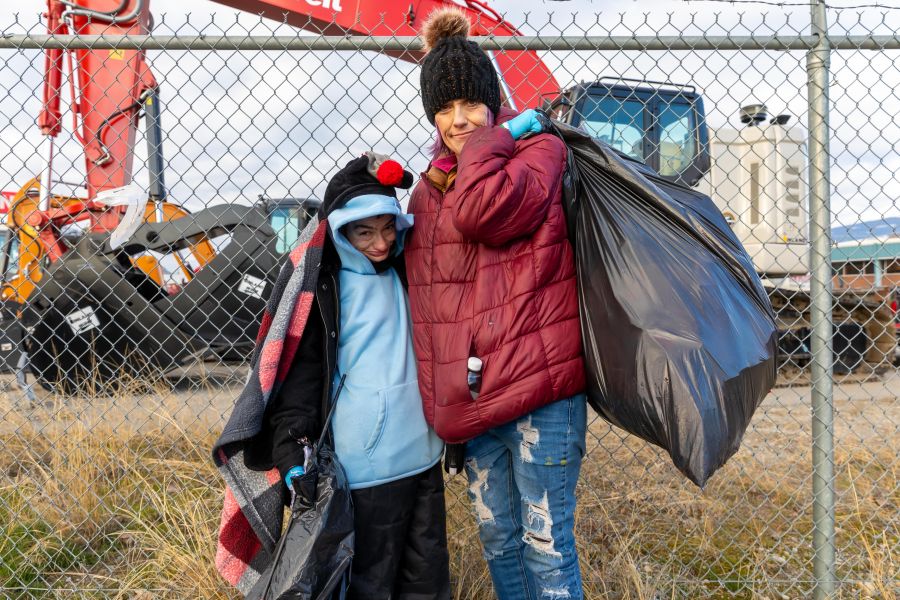
The current shelter at 402 Warren Ave., which closes at the end of March, houses 40 residents who'd likely be on the streets otherwise.
One of those on site Saturday was 100 More Homes' Co-Chair Linda Sankey, the executive director of the South Okanagan Similkameen Brain Injury Society when she's not in her 100 role. And she was quick to point to those who were (literally) doing the heavy lifting at the cleanup.
"One of the things we’ve done at 100 More Homes is to break up some of the tasks that need doing," she said. "And one of those tasks was to involve people who have lived experience with homelessness.
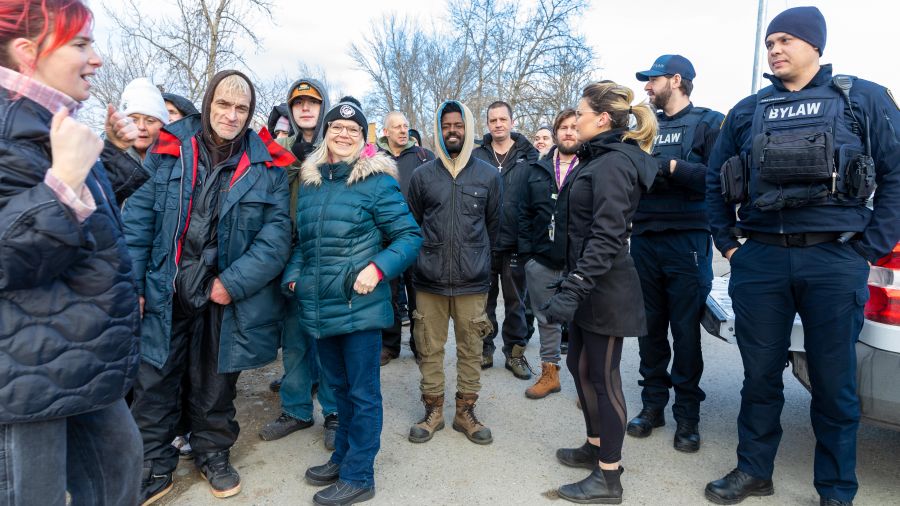
"We call them the 'Lived and Living Experience Table.' And these cleanups are absolutely their idea. They organized this. They decide what day and where."
On this day, the cleanup crew numbered 37, 32 of which received a $20/hour honorarium and five more who did it purely as volunteers.
Soon we were creekside chatting with one of them, 35-year-old Meagan Willis. Willis flagged us down when she spotted some rather large animal tracks on the shore and wanted us to take a look.
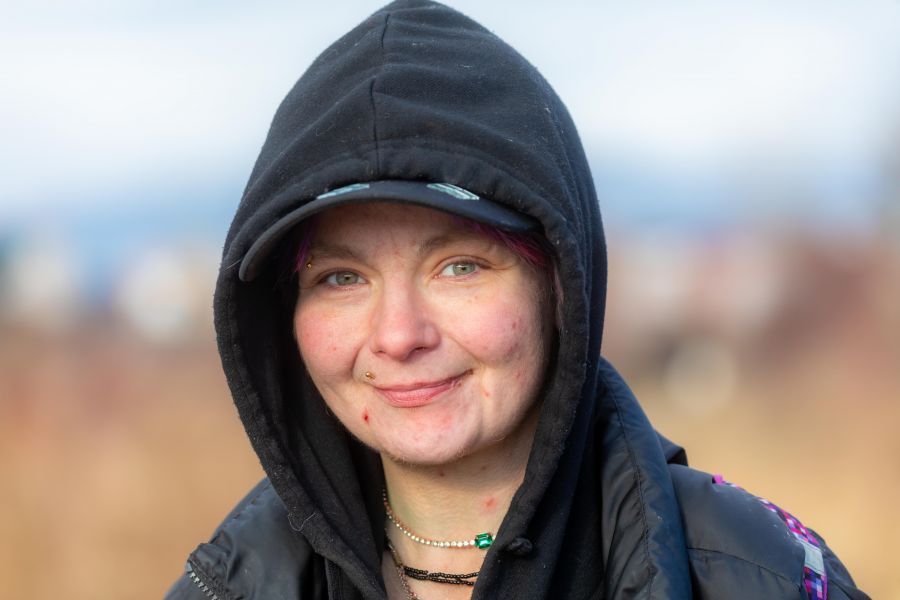
Like several of Saturday's camp cleaners, the friendly Willis, born locally, currently resides at the Warren Ave. winter shelter. She'll stay there 'til it closes and isn’t sure what comes after that.
"If my fiancé and I and our pup haven’t found a home by then, we don't know," she said earnestly. "Probably back on the streets. Maybe even here."
But, she says, they're doing all they can to avert such a situation.
"We're both searching for work," she said, "but it's hard. I think he has a chance to go back to a job he's had in the past. And I'm trying to get my mental health together."

That last bit hasn’t been easy. According to Willis, she suffers from several issues that impact her ability to get and keep a job.
"I have a lot of mental health problems," she said. "I have depression and a borderline personality disorder. And because of my ADHD (Attention-Deficit/Hyperactivity Disorder), I get bored on the job very easily. It makes me want to jump around from one to another.
"And my epilepsy as well makes me a liability."
Willis is also addicted to a drug called "down," a dangerous fetanyl-based street-level opioid.
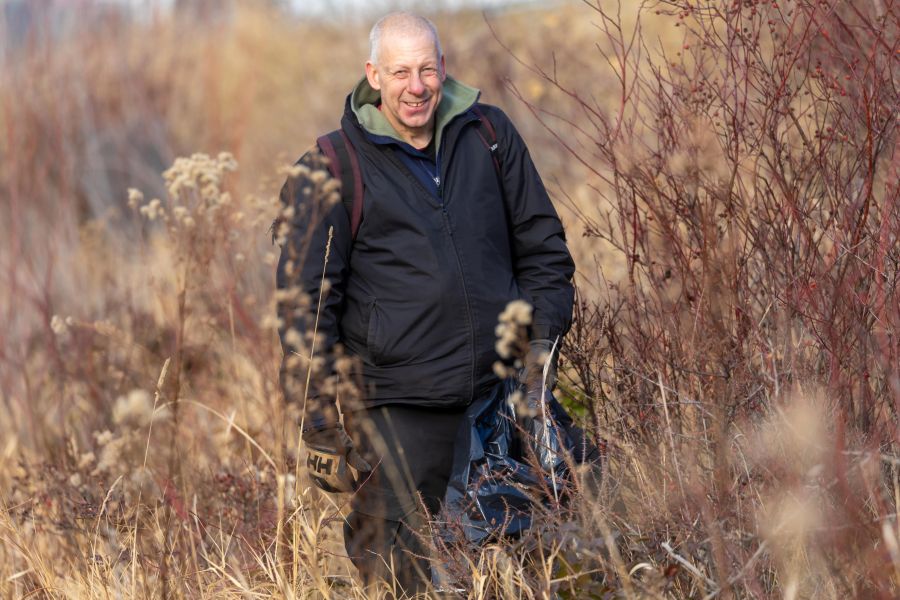
"I'm trying to get on the 'OAT' (Opioid Agonist Treatment) program to help me get off down," she said. "I hope I can."
We asked why she opted to sign up for Saturday's cleanup and she was spontaneous.
"I try to look for a silver lining to get through each day," she said, "and I was born and raised here. I want to try to keep it as beautiful as I remember it."
Not far from Willis was Cheyanne Fath. Fath, 25 years old and with a striking command of the English language, currently rents accommodation "up Carmi" but freely admits that "things can go bad at the drop of a hat."
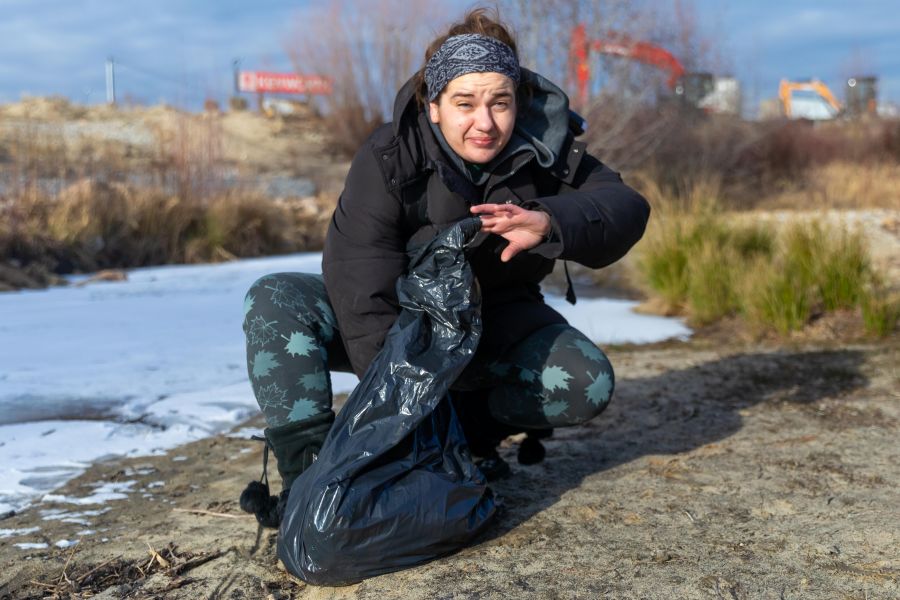
"I'm fortunate right now to have four walls and a roof," she said. "And I'm in a relationship. But it doesn’t take much for it to turn. That’s the way it's been though my history."
Born in Chilliwack, Fath says she graduated high school and has lived "all around the Okanagan" though not at the Fairview camp.
"I do harm reduction with One Sky (Community Resources)," she said. "I do outreach for people. I supply hand warmers and waters to everyone who needs it.
"I also supply harm reduction supplies, so that's substance use materials to make sure they're not overusing or sharing needles. I supply all that – pipes, needles and more."
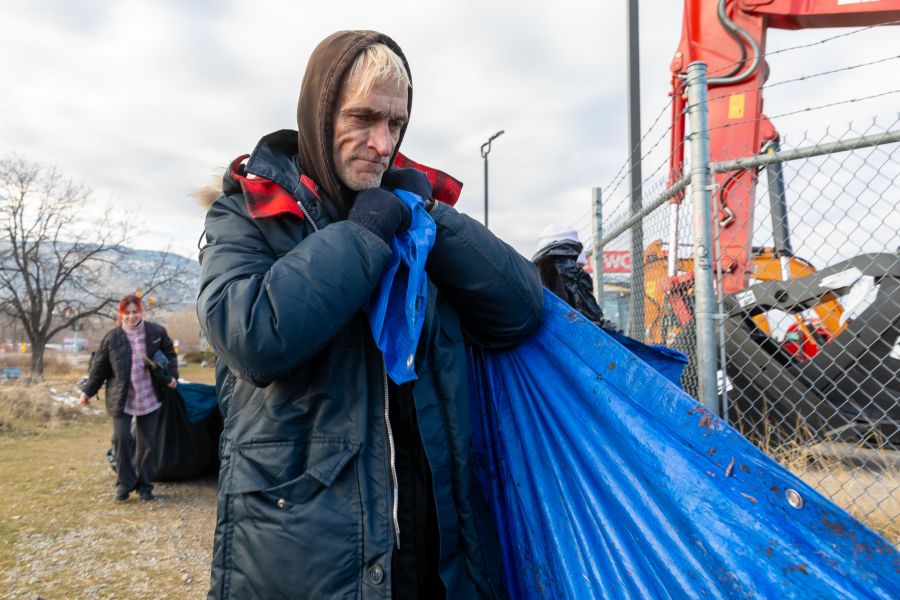
We asked Fath a broad question: What keeps the homeless homeless?
"Nobody wants them," she replied. "People don't seem to realize that when you don't have access to basic needs – food, shelter, clothing, a shower – you can’t present well and you can’t work well. You'll be lucky to find a one-off labour job.
"And when you don’t have an address to put down on file, you don’t get much from the government either."
Not surprisingly, Fath believes better understanding of the homeless is mandatory.

"I think stigma is the main reason people can't get out of the spot they're in," she said. "The more it happens and the more they hear it, the more it gets in their heads that they deserve to be here.
"We need to show more humanity to people. You never know who's down here and you never know if it might be you."
Meanwhile up in the main camp, dozens of cleaners were hustling about. Part of that group was 100 More Homes' Strategy Coordinator Annika Kirk.
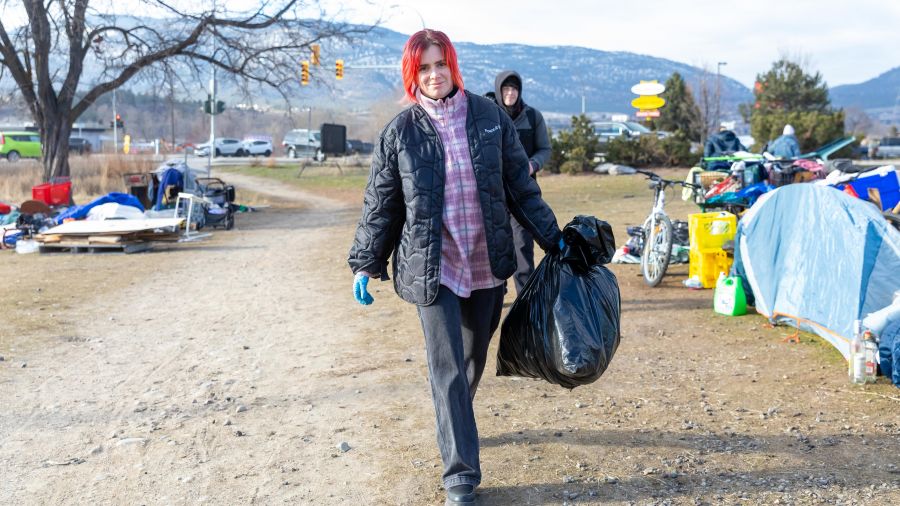
A professional brewer for eight years, Kirk has packed a lot of living into her young life. And that includes, she says, "lived experience with homelessness from when I was a youth on Vancouver Island."
But she calls the 100 More Homes position a "dream job."
"It's a dream job getting to be the bridge between all these wonderful people," she said, casting her gaze around the encampment, "and people who are working at the policy level."
Kirk was instrumental in the founding of the Lived and Living Experience Table.

As for the cleanups, Kirk called them "amazing."
"Each month one of the Table members picks a location based on what they see in the community," she said. "You can usually see where the next one is about three weeks in advance.
"You know, we want to show these aren’t just places to shelter. It's their community too. And it’s turned into this beautiful thing that brings everyone out from the community. We see many of the same people coming out every month."
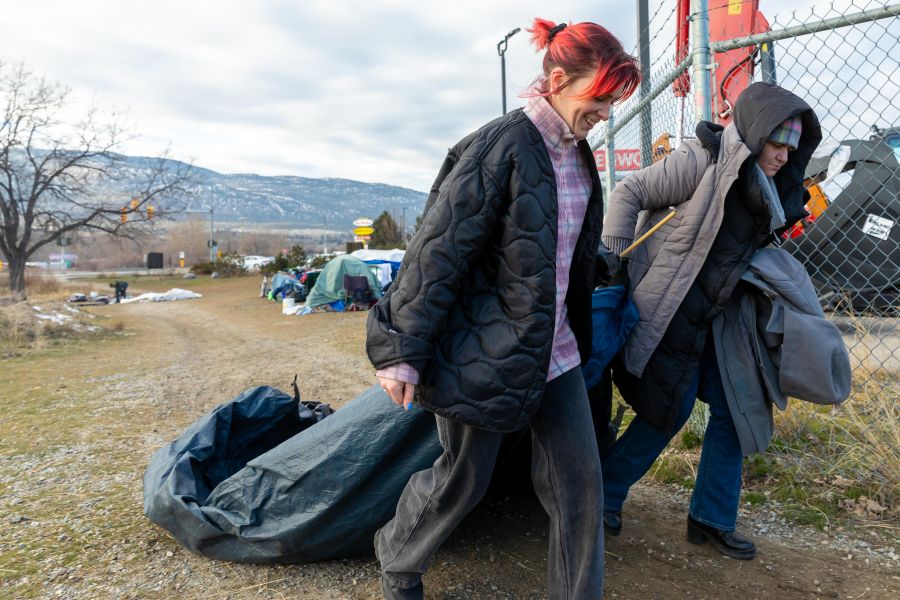
Currently, Kirk believes 15 to 20 people call the Fairview encampment home. But, she added that number fluctuates.
Moreover, it's a far smaller number right now than it was prior to the opening of the winter shelter. And it’s just as likely to climb when the shelter closes.
We asked Kirk why people should care about 100 More Homes and she was off the races.
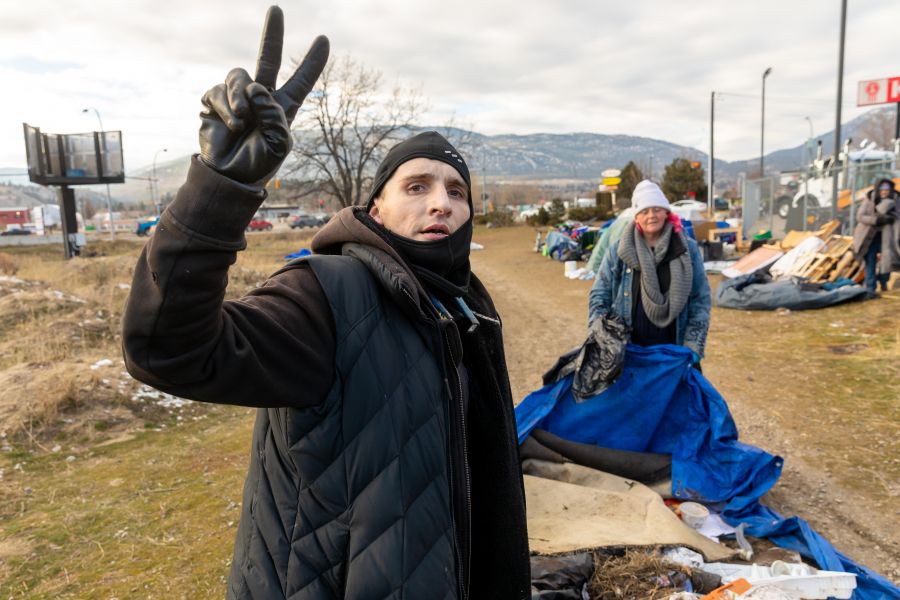
"I'm just so astounded by the impact we have," she said. "We do regular neighbourthood forums where the general public can ask us questions, and it's been incredible to see the change in people who were maybe a little confused and fearful and are now advocates and supporters.
"There's so much strength in a collective of people who care about the same complex issues and are trying to solve it together."
Many more details on the current state of homelessness in Penticton is expected Feb. 11 when 100 More Homes makes a presentation to city council.
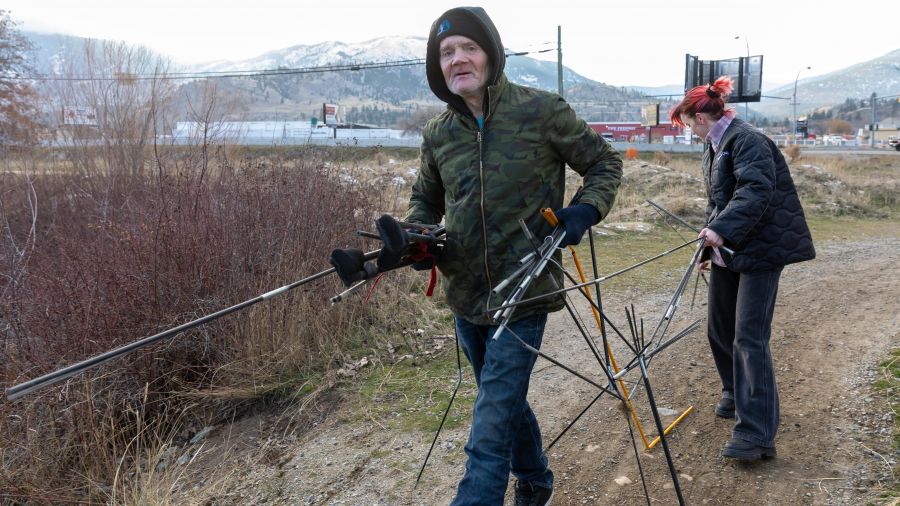
"We'll share some early stats we gathered from our temporary winter shelter data we've been collecting," said Linda Sankey.
"Part of what we want to know is where do people living outside belong. Did they start here? Did they start somewhere else? How did they end up here?
"And we'll do a wind-up report back to council again in April after the shelter closes."
Sankey did say she believes the number of local homeless continues to rise. However, she maintains the 100 More Homes collaborative is on the right track.
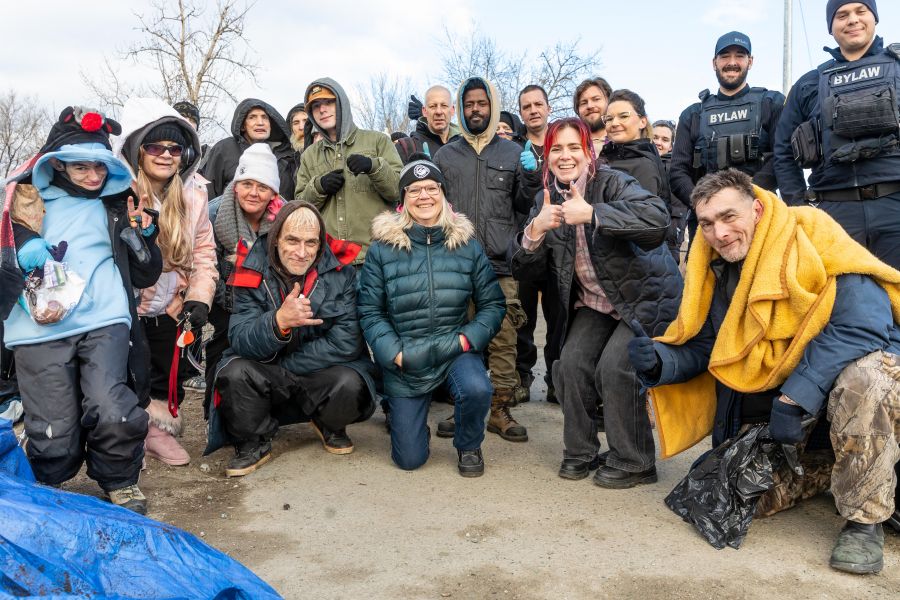
"The folks who are passing by us right now, and the folks still out there…what we’re seeing are the folks we haven’t yet been able to help," she said.
"But we'll keep on trying."
For more info on 100 More Homes Penticton, turn here.
To join in on a future Lived and Living Experience Table event and/or cleanup, look here.


























